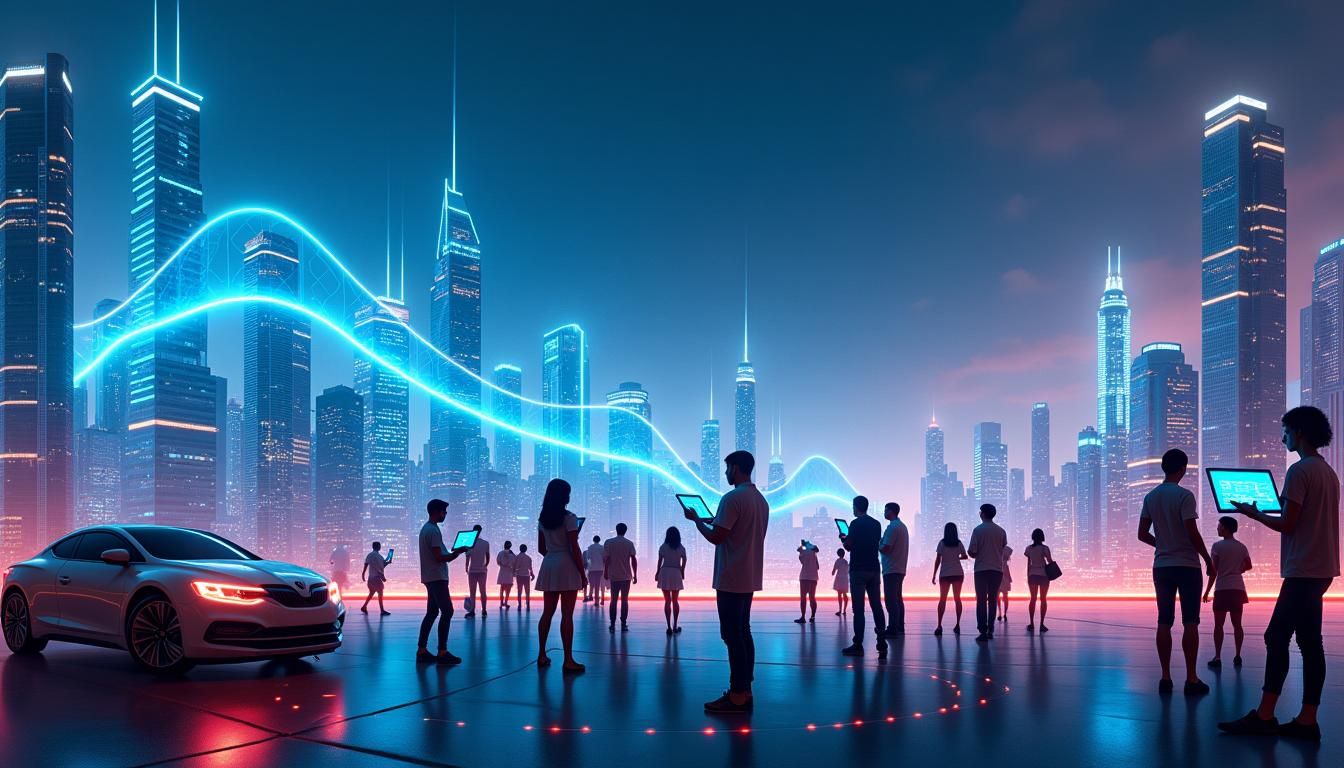
As we navigate 2025, the AI landscape is undergoing seismic shifts, driven by breakthroughs in autonomy, infrastructure, and accessibility. At Aleck.ai, we’re committed to tracking these developments to help you understand how AI continues to redefine industries and daily life. Let’s explore the most impactful trends shaping this transformative year.
One of the most revolutionary advancements in 2025 is the emergence of agentic AI—systems capable of autonomous decision-making and task execution. These AI agents replicate human reasoning to manage complex workflows, from scheduling meetings to making purchases. Major players like OpenAI, Anthropic, and Google have launched tools that automate tasks traditionally requiring human input, such as:
- Workflow automation for enterprise operations
- Personal assistant agents that handle calendar management and travel bookings
- E-commerce bots that negotiate prices and complete transactions
While these innovations promise efficiency, they’ve also sparked debates about job displacement and the need for economic adaptations, such as universal basic income (UBI). As Jensen Huang, CEO of Nvidia, noted at GTC 2025: “We’re transitioning from AI that perceives to AI that reasons.”
To support the growing demand for AI compute power, industries are investing heavily in infrastructure:
- Nvidia and xAI formed the AI Infrastructure Partnership, focusing on next-gen data centers and energy facilities.
- The Stargate partnership is building specialized data centers for OpenAI.
- Tech giants like Microsoft, Amazon, and Meta have increased capital expenditures by 30–40% year-over-year.
Nvidia projects its data center revenue will reach $1 trillion by 2028, driven by GPU demand from cloud providers. This infrastructure surge isn’t just about hardware—it’s a race to enable faster training times, lower latency, and energy-efficient AI operations.
At the GTC 2025 conference, Nvidia unveiled two game-changing AI chips:
1. Blackwell Ultra: Optimized for large language model (LLM) inference.
2. Vera Rubin: Designed for generative AI workloads, with a late-2026 release.
These chips promise 20–30x efficiency gains over previous generations, enabling real-time agentic AI applications. Nvidia also introduced:
- Isaac GR00T N1: An open-source model for humanoid robot development.
- Newton physics engine: A robotics simulation tool developed with Google DeepMind and Disney Research.
These advancements signal a future where AI-powered robots handle tasks in manufacturing, healthcare, and entertainment.
Samsung is leading the charge in embedding AI into everyday devices:
- Vision AI: Features like Click to Search and Live Translate on smart TVs.
- Galaxy S25: Real-time translation and AI-assisted photo editing.
- SmartThings Energy Mode: Optimizes home electricity usage via machine learning.
In gaming, Samsung’s AI Auto Mode and Odyssey OLED G8 monitor leverage AI to enhance graphics and reduce latency. These integrations highlight AI’s role in making technology more intuitive and user-centric.
The Aardvark prediction model, developed by the UK’s Alan Turing Institute, is a landmark in accessible AI. By running on desktop computers instead of supercomputers, Aardvark delivers:
- Hyperlocal weather forecasts with 90% accuracy.
- 10x lower energy consumption than traditional models.
- Open-source availability, particularly benefiting regions like Africa.
This project exemplifies how AI can bridge resource gaps and empower communities with limited infrastructure.
Marketers in 2025 are leveraging AI to create hyper-personalized campaigns:
- Adobe’s AI Agents: Automate ad targeting and content generation.
- Voice Search Optimization: Brands use natural language processing (NLP) to align with conversational queries.
- Interactive Video Content: Platforms like TikTok and Instagram Reels integrate AI-generated AR filters and polls.
Ethical considerations are also front-and-center. Companies like Aleck.ai emphasize transparent data practices and sustainability-focused messaging to build consumer trust.
While AI’s potential is undeniable, 2025 also brings critical questions:
- How will societies adapt to job market disruptions caused by agentic AI?
- Can infrastructure investments keep pace with energy demands?
- Will democratized tools like Aardvark ensure equitable access to AI benefits?
At Aleck.ai, we believe collaboration between policymakers, technologists, and communities will be key to harnessing AI’s power responsibly.
References
- The Atlantic: The Rise of Agentic AI
- Axios: AI Infrastructure Spending Surge
- AP News: Nvidia’s 2025 Chip Releases
- Financial Times: Aardvark’s Accessible Weather Modeling
Stay tuned to Aleck.ai for ongoing analysis of these trends and their implications for businesses and individuals alike.